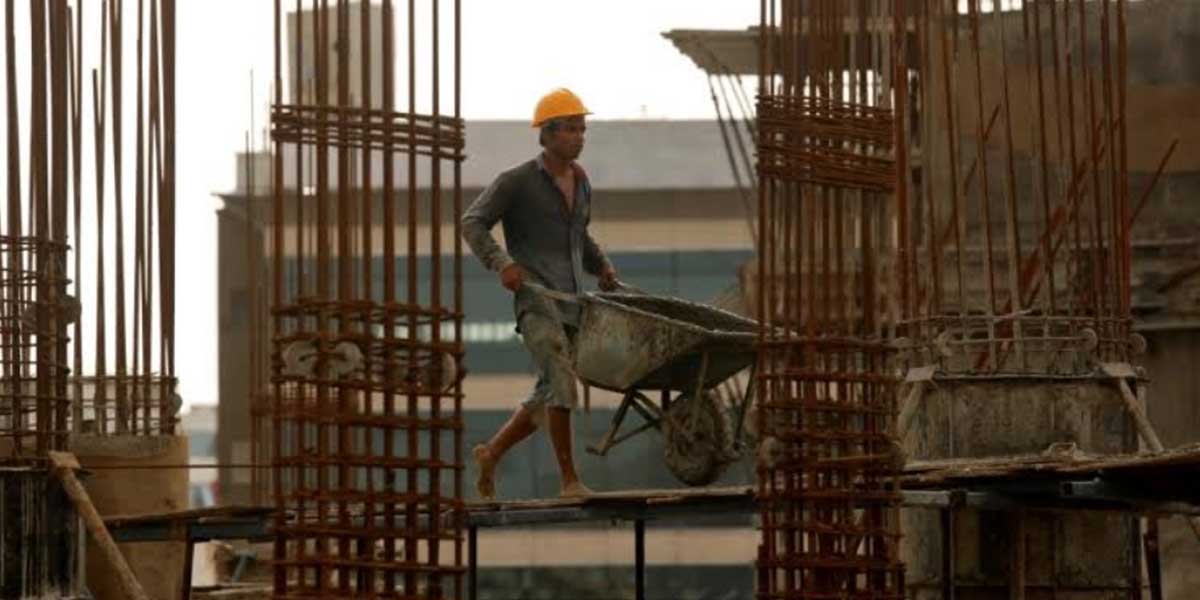The 1990s saw far-reaching changes in India’s economic policy, placing India among the 10 fastest growing countries in the world in the final two decades of the 20th century. And India’s construction industry has experienced high growth rate in recent years. In 1999-2000, the construction industry contributed 5.7 per cent to India’s GDP. Notably, the industry’s compound annual growth rate (CAGR) increased from 6.36 per cent during 1993-2000 to 9.17 per cent during 2000-2005; it further increased to 10.31 per cent during 2005-2010. Key drivers included government investment in infrastructure creation and demand in the residential and industrial sectors.
Significant developments
The construction sector is one of the leading employers in the country. In 1999-2000, it employed 17.50 million workers, a rise of 9 million over 1993-94, which further increased to 26 million during 2004-05, and 44.10 million during 2009-10.
However, unorganised workers have been dominant in the construction sector and their share stood at 70.3 per cent in 1999-2000. A significant development in 1996 was the establishment of the Construction Industry Development Council (CIDC) by the Planning Commission of the Government along with the constituents of the construction industry. Further, to address poor health and safety standards in the construction industry, the Government enacted the Building and Other Construction Workers (Regulation of Employment and Conditions of Service) Act, 1996 (BOCW), aimed to benefit workers across the country.
Apart from this, in the 1990s, India saw a focus on strengthening its road network. And since 1995, the National Highway Authority of India (NHAI) began to privatise road network development in India. Capital expenditure by NHAI rose rapidly to $ 175 million in 1999-2000.
The real fillip came in 1998, when the National Highways Development Project (NHDP) was launched with the flagship project of the Golden Quadrilateral (GQ), a total of 5,846 km of four-to-six-lane highways connecting Delhi, Mumbai, Chennai and Kolkata. The GQ project was intended to establish faster transport networks between major cities and ports, provide smaller towns better access to markets, reduce agricultural spoilage in transport, drive economic growth and promote truck transport. The Government had initially estimated that the project would cost ₹ 600 billion ($ 8.4 billion) at 1999 prices. However, the highway was built under-budget. As in August 2011, the cost incurred by the Indian Government was about half the initial estimate, at ₹ 308.58 billion ($ 4.3 billion).
This was subsequently followed by the Pradhan Mantri Gram Sadak Yojana (PMGSY) in 2000, a programme to build motorable roads to all villages with a population of 500 and above.
The fillip
The use of modern construction techniques in highway construction got a fillip with the World Bank-aided four-laning projects such as the Delhi-Jalandhar NH-1 highway, which was taken up in the mid-1990s and, subsequently, the construction of the tolled and cemented Mumbai-Pune Expressway. Highway development got further impetus with the NHDP launched in the early 2000s.
Speaking of projects, between 1996 and 1999, the construction of the Mumbai-Pune Expressway, which had been languishing, was fast-tracked. During this time, 55 flyovers were built in Mumbai alone, and Maharashtra’s rural road connectivity increased to 98 per cent. The concept of public-private partnership (PPP) in infrastructure development was also pioneered at the time.
Notably, the consumption of cement, which is one of the largest inputs into the construction industry, increased to nearly 83 million tonne by 1997-98.
The voice of the industry
When transformation is the mantra, information is power. And so, Construction World (CW) was established in 1996, which is India’s premier and largest circulated construction business magazine today. It covers the gamut from projects, policies and people to topical concerns, trends and technology, with reason, intelligence and objectivity.
While we celebrate the 30th anniversary of the reforms of liberalisation , Construction World has been a witness and has contributed to setting benchmarks for establishing industry standards. During these 25 years ASAPP INFO GLOBAL GROUP through its flagship Construction World has reflected India’s transformation, echoed its aspirations, addressed its challenges and predicted its potential across crucial sectors such as construction, infrastructure, power, real estate, manufacturing, automobile and textiles.
Construction World counts among its esteemed readership EPC and engineering companies; civil and structural contractors and engineers; equipment and building material companies; architects and builders; interior designers; government agencies, policymakers and bureaucrats; financial institutions; and high-net-worth investors.
Its research-driven features, timely news reports, business insights and opportunities, material and market updates, showcase of Indian and international benchmark projects, interviews with change-agents, and informed policy recommendations, backed by meticulous editing and vibrant design, have won the magazine accolades aplenty, including the ‘Best News Magazine’ at the CIDC Vishwakarma Awards; the ‘Best Single Issue’ and ‘Best Feature Article’ awards at The Tabbies; and first prize in the ‘Multimedia Strategy and Business Model’ category for best representation across all media in Asia, at the Asian Multimedia Awards in Manila.
Going forward, CW remains committed to catalyse growth and partner in the nation-building process with valuable information, insights and analyses. This indeed is the promise of ASAPP INFO GLOBAL GROUP.




















